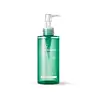What's inside
What's inside
 Key Ingredients
Key Ingredients

 Benefits
Benefits

 Concerns
Concerns

 Ingredients Side-by-side
Ingredients Side-by-side

Glycine Soja Oil
EmollientCetyl Ethylhexanoate
EmollientSorbeth-30 Tetraoleate
EmulsifyingIsododecane
EmollientOlea Europaea Fruit Oil
MaskingCamellia Japonica Seed Oil
EmollientHydrogenated Coconut Oil
EmollientOctyldodecanol
EmollientPolybutene
Caprylic/Capric Triglyceride
MaskingWater
Skin ConditioningTocopherol
AntioxidantSalvia Officinalis Oil
MaskingPanax Ginseng Seed Oil
EmollientArtemisia Vulgaris Oil
PerfumingOcimum Basilicum Oil
MaskingCorylus Avellana Seed Oil
EmollientNigella Sativa Seed Oil
EmollientButylene Glycol
HumectantPanax Ginseng Berry Extract
Skin ConditioningGlycerin
Humectant1,2-Hexanediol
Skin ConditioningMethylpropanediol
SolventPanax Ginseng Root Extract
EmollientEthyl Hexanediol
SolventPanax Ginseng Extract
AntioxidantPanax Ginseng Leaf/Stem Extract
Skin ConditioningEthylhexylglycerin
Skin ConditioningGlycine Soja Oil, Cetyl Ethylhexanoate, Sorbeth-30 Tetraoleate, Isododecane, Olea Europaea Fruit Oil, Camellia Japonica Seed Oil, Hydrogenated Coconut Oil, Octyldodecanol, Polybutene, Caprylic/Capric Triglyceride, Water, Tocopherol, Salvia Officinalis Oil, Panax Ginseng Seed Oil, Artemisia Vulgaris Oil, Ocimum Basilicum Oil, Corylus Avellana Seed Oil, Nigella Sativa Seed Oil, Butylene Glycol, Panax Ginseng Berry Extract, Glycerin, 1,2-Hexanediol, Methylpropanediol, Panax Ginseng Root Extract, Ethyl Hexanediol, Panax Ginseng Extract, Panax Ginseng Leaf/Stem Extract, Ethylhexylglycerin
Water
Skin ConditioningDipropylene Glycol
HumectantSorbeth-30 Tetraoleate
EmulsifyingIsopropyl Palmitate
EmollientEthylhexyl Pelargonate
EmollientGlycerin
HumectantC12-14 Pareth-12
EmulsifyingPentylene Glycol
Skin ConditioningPollen Extract
EmollientRosa Canina Fruit Oil
EmollientSimmondsia Chinensis Seed Oil
EmollientPolyglyceryl-10 Laurate
Skin ConditioningCitric Acid
BufferingDipotassium Glycyrrhizate
HumectantSodium Citrate
BufferingAllantoin
Skin ConditioningDisodium EDTA
Olea Europaea Oil Unsaponifiables
Skin ConditioningTriticum Vulgare Germ Oil Unsaponifiables
EmollientGlycine Soja Oil Unsaponifiables
EmollientButylene Glycol
HumectantLactobacillus
Skin ConditioningLeuconostoc/Radish Root Ferment Filtrate
AntimicrobialStreptococcus Thermophilus Ferment
HumectantBifida Ferment Lysate
Skin ConditioningFructooligosaccharides
HumectantParfum
MaskingHydroxyacetophenone
AntioxidantEthylhexylglycerin
Skin ConditioningWater, Dipropylene Glycol, Sorbeth-30 Tetraoleate, Isopropyl Palmitate, Ethylhexyl Pelargonate, Glycerin, C12-14 Pareth-12, Pentylene Glycol, Pollen Extract, Rosa Canina Fruit Oil, Simmondsia Chinensis Seed Oil, Polyglyceryl-10 Laurate, Citric Acid, Dipotassium Glycyrrhizate, Sodium Citrate, Allantoin, Disodium EDTA, Olea Europaea Oil Unsaponifiables, Triticum Vulgare Germ Oil Unsaponifiables, Glycine Soja Oil Unsaponifiables, Butylene Glycol, Lactobacillus, Leuconostoc/Radish Root Ferment Filtrate, Streptococcus Thermophilus Ferment, Bifida Ferment Lysate, Fructooligosaccharides, Parfum, Hydroxyacetophenone, Ethylhexylglycerin
 Reviews
Reviews

Ingredients Explained
These ingredients are found in both products.
Ingredients higher up in an ingredient list are typically present in a larger amount.
Butylene Glycol (or BG) is used within cosmetic products for a few different reasons:
Overall, Butylene Glycol is a safe and well-rounded ingredient that works well with other ingredients.
Though this ingredient works well with most skin types, some people with sensitive skin may experience a reaction such as allergic rashes, closed comedones, or itchiness.
Learn more about Butylene GlycolEthylhexylglycerin (we can't pronounce this either) is commonly used as a preservative and skin softener. It is derived from glyceryl.
You might see Ethylhexylglycerin often paired with other preservatives such as phenoxyethanol. Ethylhexylglycerin has been found to increase the effectiveness of these other preservatives.
Glycerin is already naturally found in your skin. It helps moisturize and protect your skin.
A study from 2016 found glycerin to be more effective as a humectant than AHAs and hyaluronic acid.
As a humectant, it helps the skin stay hydrated by pulling moisture to your skin. The low molecular weight of glycerin allows it to pull moisture into the deeper layers of your skin.
Hydrated skin improves your skin barrier; Your skin barrier helps protect against irritants and bacteria.
Glycerin has also been found to have antimicrobial and antiviral properties. Due to these properties, glycerin is often used in wound and burn treatments.
In cosmetics, glycerin is usually derived from plants such as soybean or palm. However, it can also be sourced from animals, such as tallow or animal fat.
This ingredient is organic, colorless, odorless, and non-toxic.
Glycerin is the name for this ingredient in American English. British English uses Glycerol/Glycerine.
Learn more about GlycerinSorbeth-30 Tetraoleate is a surfactant and emulsifier.
This ingredient is a tetraester from oleic acid and polyethylene glycol ether of sorbitol.
As an emulsifier, it helps ingredients such as oil and water mix together. This allows the dirt and oils in your skin to be washed away.
One study found pumpkin oil containing Sorbeth-30 Tetraoleate helped hydrate the skin and did not cause any irritation.
Learn more about Sorbeth-30 TetraoleateWater. It's the most common cosmetic ingredient of all. You'll usually see it at the top of ingredient lists, meaning that it makes up the largest part of the product.
So why is it so popular? Water most often acts as a solvent - this means that it helps dissolve other ingredients into the formulation.
You'll also recognize water as that liquid we all need to stay alive. If you see this, drink a glass of water. Stay hydrated!
Learn more about Water